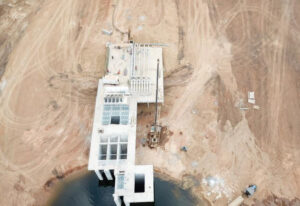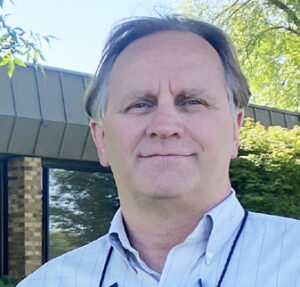Wisconsin-based Watertronics provides a wide variety of pump stations, control panels, and telemetry products for the agricultural, industrial/ municipal, landscape irrigation, and golf irrigation markets. In this interview, Watertronics Co-CEO Rick Reinders tells us about the company’s commitment to quality and service and its offerings for the irrigation market.
Irrigation Leader: Please tell us about your background, your family, and the origin of Watertronics.
Rick Reinders: Watertronics began in 1987 as a division of Reinders Inc., my family’s business, a green industry distributor of turf and irrigation supplies in the Midwest. Our company was originally founded in Elm Grove, Wisconsin, in 1866. Over the years, it evolved from a general store to a milling operation, and eventually became the green industry wholesale distributor that exists today. As Watertronics grew, its capital needs and sales geography necessitated that it become an independent company. That separation occurred in 1994. The business grew over the years, and when my father wanted to retire, we sold the business to Lindsay Corporation in 2008. My business partner, Chip Carlson, and I stayed on to run it for over 9 years. We were fortunate to be able to buy back the company in 2018 and to continue to grow Watertronics as a global leader in the package-pump-station market.
Irrigation Leader: What markets is Watertronics active in?

Rick Reinders: Our four main markets are the agriculture, industrial/municipal, landscape, and golf irrigation sectors. In addition to supplying pumping stations to these markets, we also provide water reuse systems, including rainwater harvesting, water filtration, desalination, and purification systems.
Irrigation Leader: Please tell us about some of your main product lines.
Rick Reinders: Our product lines include vertical turbine pump stations; horizontal centrifugal pump stations; and submersible sled-mounted pump stations, which we call BlackMax systems. We also provide electrical control panels and telemetry controls. We can supply fully integrated skids with pumps, controls, filtration, and so on; in other cases, we just supply the control panel and telemetry.
Our Watervision telemetry product can be installed on our equipment or on existing equipment in the field and allows the user to monitor, control, and troubleshoot equipment remotely. It can be used for pump stations, canal gates, temperature sensors, pressure sensors, and so on. In addition to enabling remote control, it also gives the user insight into how efficiently the system is running, whether there are any impending issues, whether it’s starting to vibrate or lose performance, and many other predictive failures. Watervision provides a graphical histogram of how the pump station is performing. Sensors can be added to record data such as energy usage, kilowatts consumed per acre-feet of applied water, salinity, pH, and much more. Customers tell us that the telemetry product is a force multiplier. It allows a single person to monitor and care for more equipment because they can do it on their iPhone, desktop, or tablet rather than having to drive from site to site. The system automatically notifies the user with a text message or e-mail when there is a problem.
We also have a patented technology called dynamic demand control that involves a closed-loop control algorithm that allows us to sample flows and pressures in the field and adjust the pressure regulation setting at the pump station to precisely meet the varying requirements of the irrigation system.
Irrigation Leader: What portion of your products are sold in an off-the-shelf form and what portion are custom designed?
Rick Reinders: Around 25 percent of our products are off-the-shelf or catalog-type items. Those include our low-cost ag panel line (variable-frequency-drive-in-a-box products) and our WaterMax line (pump-in-a-box products). They have simple controls, usually involve a single pump, and integrate with Watervision, our cloud-based telemetry.
We also have our vertical turbine quick-ship product, which comes with a standard set of options and configurations to choose from. This configured-to-order product is pre-engineered and avoids the typical 3–6 weeks of engineering time that our engineered-to-order products require.
Irrigation Leader: What kind of preparation is needed to create an engineered-to-order system? Do you visit the potential customer’s facility?
Rick Reinders: If we’re replacing or upgrading equipment in the field, we assess the customer’s existing equipment. If it’s new construction, then we evaluate the infrastructure and the available power and water sources. About 70 percent of our business involves replacement or upgrade; the rest is new construction.
Irrigation Leader: How can your pumps help reuse water or boost water use efficiency, particularly in the irrigation sector?
Rick Reinders: First, it is important to select the right pump—whether it is a vertical turbine, a horizontal centrifugal pump, or a submersible pump—and to understand how it’s going to be used today and how its flow and pressure requirements may increase as infrastructure is built out. Taking into consideration the environmental conditions, selecting the right components, and evaluating the efficiency of the various designs are also parts of the decision process. Next, we address the control aspect, which is probably the most important consideration. That includes knowing how to sequence pumps and making sure you have the most efficient pump or series of pumps to meet the demand. Finally, it is important to be able to interface with and provide data to the other control programs that create the demand, such as pivot control systems, sprinkler control systems, or drip controller systems, so that they can deliver the proper amount of irrigation to optimize the efficiency of the pump station. A good example would be that if one of the pumps in a multipump pump station goes down for some reason, we want to provide information about its new capacity to the irrigation control software so that rather than demand more flow than the pump station is capable of, it can reprioritize and come up with a lower-flow program that would still allow irrigation to occur without causing a low-pressure shutdown.
Irrigation Leader: What kind of customer service do you supply to your customers?
Rick Reinders: A pump station has a life cycle of 20 years or longer, and we feel that we have a responsibility to make sure our pump stations exceed that, so we provide and train a service network to maintain and service our products. We store and retain the data on every job to ensure that there is accurate information on the original build details, and we also retain all post-sale service-related data. We want to track failures in the field and make sure that we’re evolving the products to maximize their life cycle, and we want to make sure we select the construction materials that are appropriate for the water and power quality that is present. We are committed to educating our service network and our customers to help them more effectively and efficiently operate the systems. We routinely go above and beyond our warranties to make sure that we’ve exceeded the expectations of our customers. Many of our customers become repeat buyers because of our commitment to quality and after-sales support.

We have a pump service network group that is dedicated to customer support. It’s an association of 350 highly trained independent field technicians who are certified by Watertronics and are required to come to the Watertronics factory once every 2 years for a weeklong course during which they update their training and knowledge.
Irrigation Leader: In addition to your field technicians, can you provide some degree of tech support or customer service remotely, particularly for your telemetry systems?
Rick Reinders: Yes. We are able to go online with any of our pump stations that are equipped with WaterVision, our remote telemetry system, and assess running conditions and other aspects of operation. We can see the issues that lead up to shutdowns or failures, and then we can improve and fine-tune some of the parameters remotely to optimize the pump station’s efficiency.
Irrigation Leader: Has Watertronics been affected by supply chain shocks and delays?
Rick Reinders: We’re not immune; we experience the same supply chain woes that are affecting everyone else. To help mitigate that, we’ve invested many millions of dollars in extra inventory. We try to maintain 6 months’ to a year’s worth of inventory on our long-lead and critical-path items, such as motors, pumps, programmable logic controllers, and operator interfaces. That inventory is helping us meet our schedule and support our field service group’s needs for replacement parts. We have also seen an increase in our lead times due to the production capacity of our facility and the labor constraints that we’re under.
Irrigation Leader: What should all irrigation districts know about Watertronics?
Rick Reinders: We’re a well-rounded company with a lot of engineering know-how and resources that can help with the design and optimization of their pumping equipment, including packaged pumping systems, controls, telemetry, and advanced control algorithms for monitoring and operating systems. We work well with engineering firms and can leverage the knowledge we have gained from over 15,000 pump stations in the field to provide recommendations for field-proven solutions.
Irrigation Leader: What is your vision for the future?
Rick Reinders: My vision for the future is making our systems operate in a smarter manner by using the extraordinary amount of data that we’re collecting. For example, if we look at the data conditions that repeat themselves before pump failures, we can do a better job of predicting maintenance requirements before a catastrophic failure occurs. We can also look at the efficiency profile of irrigation cycles and provide solutions to allow the systems to operate in a more efficient manner. There are many opportunities for us to create a smarter operating system by looking at the data and developing a smarter scenario to operate the pump station.
Rick Reinders is the co-CEO of Watertronics. He can be contacted at rick.reinders@watertronics.com.

